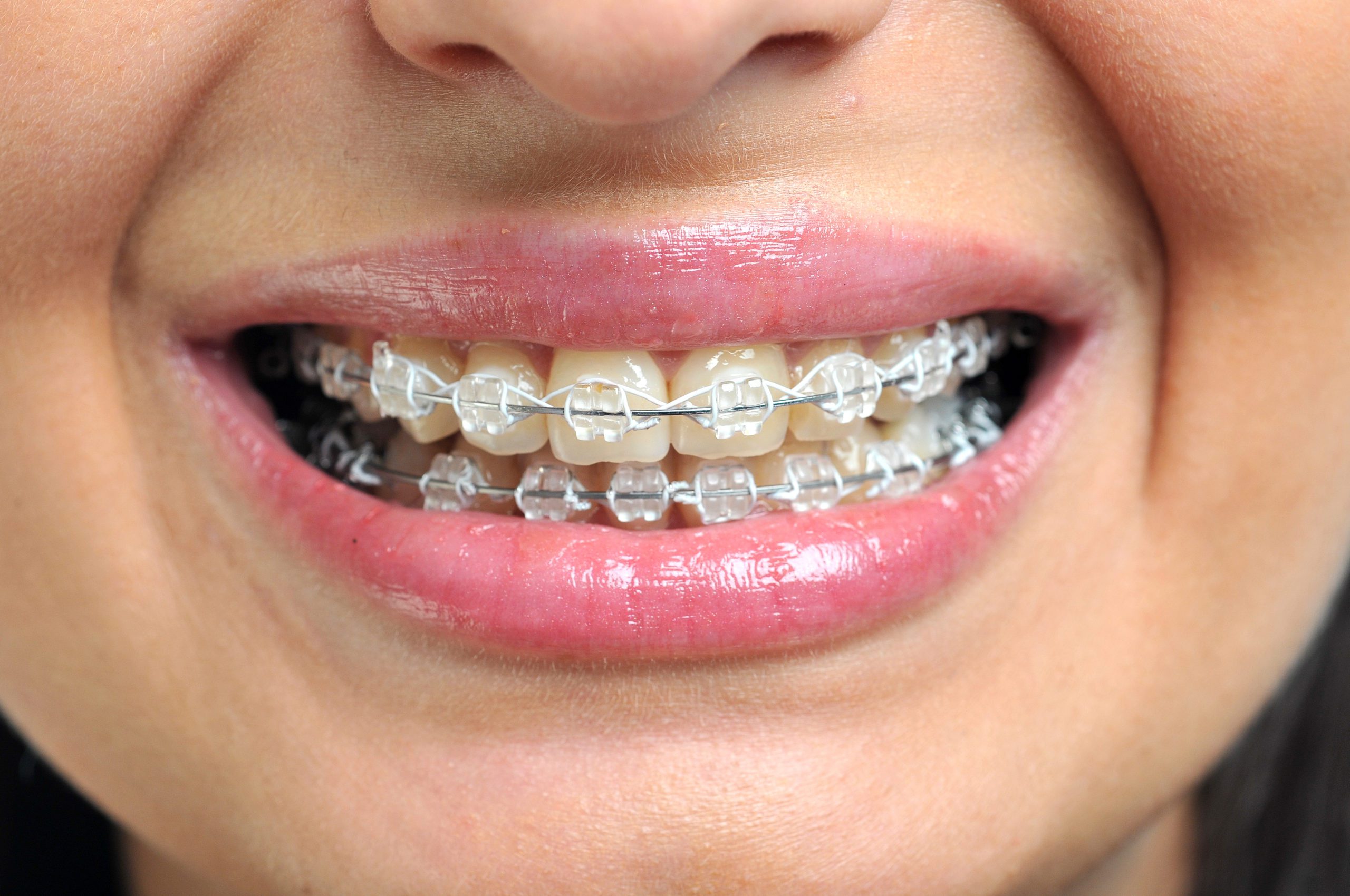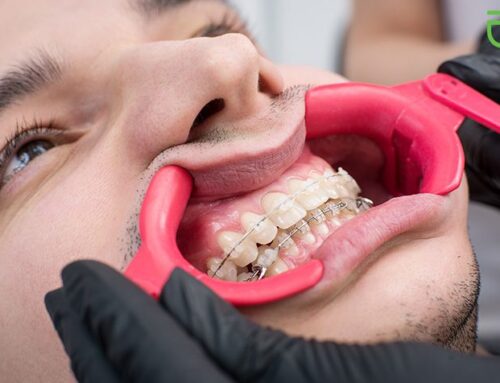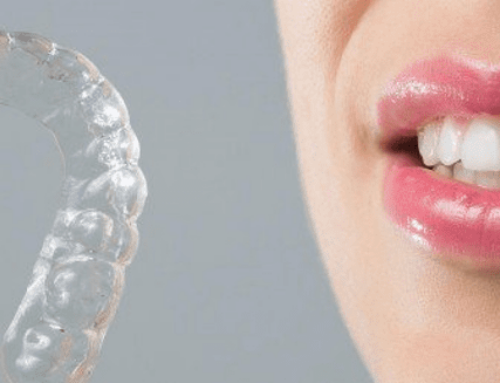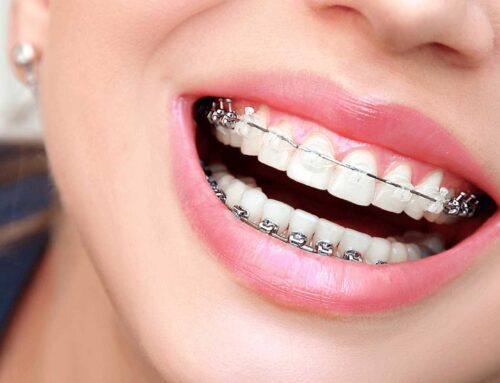What to Expect from Orthodontics – A Patient’s Guide
Braces help many Canadians to achieve the straight, perfectly aligned smile they’ve always wanted, but there are always many questions to be answered before committing to orthodontic treatment. This guide will help explain what can be expected before, during, and after getting braces.
Choosing to undergo orthodontic treatment is a big commitment, and not something that many people are keen to rush into for a wide range of reasons. However, the most common concerns related to orthodontic treatment often fall away when the process is explained in more detail, and the patient is properly informed on what the entire end-to-end experience will be like for them. That’s why we’ve created this guide for patients.
The benefits of undergoing orthodontic treatment are quite significant, and the impact that straighter teeth can have on your overall health and well-being cannot be overstated. Braces are able to correct a wide range of dental issues that result from overbites, underbites, and other tooth misalignments, providing the patient with better overall mouth function and greater self-confidence. After orthodontic treatment is completed, patients definitely feel the satisfaction of having the best smile possible.
Depending on your unique situation, your dentist may recommend a specific type of braces, or offer multiple different options if there is more than one approach that can meet your needs. Each type of braces has unique characteristics that differ from the other styles, however all are able to achieve the same end goal of straighter, uniformly-aligned teeth. Let’s take a closer look at the most popular styles of braces.
Pros and Cons of Different Types of Braces
Traditional Metal Braces
Traditional metal braces are simple and effective, and are the style most people are familiar with. These braces consist of three parts; metal brackets which are affixed to each tooth, arch wires which span across all the teeth on the top or bottom jaw, and ligatures which are small rubber elastics used to hold the arch wires in place on the brackets. The arch wires are shaped to exert a constant pressure on the teeth in order to gradually shift their position in the jaw. With each checkup, the ligatures are removed and the arch wires are adjusted or replaced with a new wire to continue the process until the teeth achieve the final ideal positions.
Metal braces are a straightforward approach to orthodontics, and provide a consistent and predictable treatment experience for patients. Modern styles of metal braces are more comfortable than those of years past, and patients are often able to choose colored ligatures for their braces in order to showcase a little personality in their smile if they desire.
It’s not unusual for patients to experience temporary discomfort or mild soreness in the jaw after each adjustment while their mouth gets accustomed to the new pressure sensations, but this discomfort will subside after a day or so. In addition, metal braces do require extra care in terms of cleaning in order to ensure effective removal of food particles, plaque, and bacteria from the brackets and wires. Patients will need to be diligent and learn some new oral hygiene techniques to keep their mouth and braces clean and fresh.
Ceramic Braces
Although very similar to metal braces in terms of the components and how they work, ceramic braces use very different materials in their construction. Instead of metal, the brackets used in ceramic braces are made from a composite material that can either be matched to the natural shade of the patient’s teeth, or could even be made to be transparent. The purpose of this is to reduce the visibility of the braces for the patient, providing a subtle appearance while they undergo their treatment.
Ceramic braces certainly appeal to patients who wish for a less noticeable style of orthodontics, but there are some other factors to consider. For example, the material used to construct ceramic braces is a tough dental composite product, but it is not indestructible. Certain parts of ceramic braces could possibly become damaged or broken in the event of an unexpected impact or accident, so additional caution is generally advised for patients with ceramic braces.
Fast Braces
At a glance, it is easy to mistake fast braces for traditional metal braces, as they look visually similar. However, the design of the components of fast braces are precisely engineered to accelerate the treatment timelines. Specialized bracket shapes and supplementary treatments that use subsonic therapy and phototherapy speed up the rate at which teeth will shift positions, while providing greater comfort throughout the entire process. In many cases, the time needed to achieve the desired outcome can be up to 50% less than what could be accomplished with traditional braces. This aspect makes fast braces a great option for patients who want faster results.
Fast braces may not be the best choice for all patients, however. In certain situations, patients may not want to undergo additional treatments or schedule more frequent appointments. Many patients are perfectly comfortable with the process using traditional or ceramic braces, and may not feel the need for the fastest possible treatment. In this regard, personal preference plays a significant role.
Invisalign Invisible Braces
Another option that may be offered to an orthodontic patient is the innovative Invisalign system of invisible braces. This unique approach to orthodontics does not use brackets or wires, but rather a sequential set of clear plastic tooth aligners. Each set of aligners is worn by the patient for about two weeks, at which time they move to the next set in the sequence to keep the treatment progressing. Invisalign offers many advantages, as the thin, clear, plastic material is very smooth and low-profile, making it nearly impossible to see and very comfortable to wear for the patient. Plus, the aligners can be removed by the patient for eating or cleaning, and then put back on at any time for added convenience.
While Invisalign is in high demand for obvious reasons, it may not be ideal for all patients. In the event that a patient requires a more dramatic movement of teeth, it’s possible that Invisalign may not be able to achieve the desired effect. Sometimes metal braces are required in order to move individual teeth in ways that Invisalign simply cannot.
Regardless of the type of braces that your dentist recommends for you, the ultimate outcome will essentially be the same. You’ll get much straighter teeth, and a more uniform smile that you’ll love. Of course, words don’t really convey the real impact of what can be achieved through orthodontic treatments. You really need to see some real-world examples of what other patients have experienced.
Let’s take a look at some before and after comparisons to illustrate what you can expect when the braces come off.
Comparing Before and After Treatment with Braces
Starting with this patient who underwent treatment using fast braces, you can immediately see a profound difference in the alignment of the teeth, and a vast improvement to the bite pattern consistency in this patient. If left untreated, this particular patient could have started to see premature wear on the misaligned teeth, as well as discomfort during eating or speaking. After fast braces, these problems have effectively been prevented.
Invisalign results are equally impressive, as illustrated by this young lady who had significant misalignments throughout the top and bottom of the jaw. Thanks to Invisalign, any crowding problems that would have progressed into more serious bite pattern issues have been solved and the teeth are all straight, aligned, and much more uniform on both the top and bottom arches.
Before Invisalign:
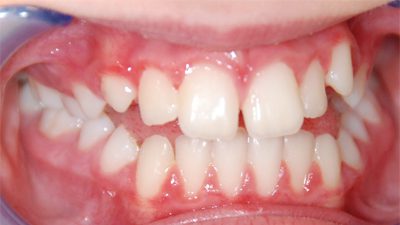
After Invisalign:
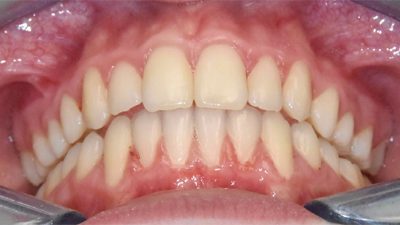
Braces are not just for young teens, however. Adults are also realizing the benefits of orthodontics at all ages, with many taking advantage of treatments like Invisalign for a wide variety of personal reasons. We encourage you to take a moment to watch these compelling success stories of mature patients who achieved their goals with Invisalign.
Invisalign – Before and After Stories
Take The Next Step Towards a Straighter Smile with Braces
At the end of the day, getting braces will be a positive experience that will provide you with a beautiful smile and greater confidence. Taking care of your dental health is an essential part of your overall well-being, and orthodontics will help ensure that your mouth is in its best possible shape.
Whether you’re correcting a bite pattern problem, or simply want a straighter set of teeth to show off when you smile, there’s no need to delay any longer. Contact the team here at Georgian Dental today and arrange for your first orthodontics consultation. We will be glad to provide all the information you need to make the best choice for your dental health, and ensure that your treatment goes smoothly from beginning to end. Give us a call, and let’s get your smile in style with braces!
Appointment Request
If you’re interested in any of our procedures, and would like to meet with one of our dentists to discuss options, costs and get additional information, complete this short form and we’ll give you a call to arrange for a no-obligation appointment at our Barrie clinic.
